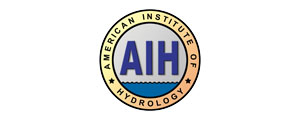By David Owen, Riverhead Books, 2017
The Colorado River is often referred to as “America’s hardest-working river.” As it winds through some of the driest land in the country, it supplies water for more than 40 million people and 5.7 million acres of irrigated lands in seven western states, plus a small slice of Mexico. It eventually dribbles into the dry soils of Baja California, Mexico before reaching its natural historic outlet – the Gulf of California.
The aforementioned population and irrigated acreage values should be considered rather provisional, given the ongoing drought that is diminishing the basin’s water supplies. The Bureau of Reclamation cites a 34% probability that water levels in the massive Lake Powell Reservoir, which stores runoff from the 108,000-square-mile “upper basin” and regulates that water for “lower basin” use, will drop too low to generate hydropower in 2023. This has never happened before Thus, Reclamation implemented emergency measures this year to move 181,000 acre-feet of water down to Lake Powell from its higher-elevation reservoirs in an unprecedented scramble to prop up reservoir storage.
How did America’s hardest-working river come to this sorry state? Where the Water Goes, by David Owen, takes the reader on a journey to understand the convoluted story of how and why the Colorado River can no longer provide what we’ve asked of it in the past. Consider that when Owen’s book was published just four years ago, Lake Powell still held 7.4 million more acre-feet of water than today!
Owen’s account is aimed at a broad audience. His writing is light on numbers but heavy on stories illuminating the people, places, and activities associated with the river and its myriad users. He winds his way down the river system in a rental car, from the Colorado headwaters through Utah, Arizona, Nevada and California. We meet families irrigating vineyards in Colorado’s Grand Valley. We meet water managers in Denver and Las Vegas. We meet environmentalists seeking to re-hydrate desiccated wetlands in Mexico’s Colorado River Delta. We tag along with farmers in California’s Imperial Valley growing lettuce for America’s dinner tables, and forage for a global cattle market.
Through these stories, Owen (a staff writer for New Yorker) effectively describes the various hopes, expectations, regulations and stresses that have shaped management of Colorado River flows since the first 14-mile canal was hand-dug in 1890 to move water out of the basin’s headwaters to thirsty agricultural lands on the far side of the Rocky Mountains. His journey is a travelogue as much as a treatise on the Colorado River. This may annoy readers who might prefer more hydrology and fewer human-interest digressions. Nevertheless, through intriguing discourse, Owen skillfully portrays the convoluted history of the Colorado River – a waterway that has produced, over time, the maddeningly complex body of laws and regulations governing its management.
Importantly, Owen also illustrates how this byzantine body of regulations frequently stands in the way of implementing effective long-term solutions to the problem of over-allocation. As Owen puts it, “If you picked just about any high school civics class in the country and gave its students a year to gather information and think, they could almost certainly come up with an approach to western water use that would be more rational than the arcane patchwork we have currently.”
But, as Owen notes, that’s not going to happen. Instead, those responsible for managing the Colorado will need to collectively determine a path forward through this tangled administrative puzzle by applying creativity, collaboration, and — inevitably — large sums of cash needed to overhaul the status quo.
Owen helpfully reviews various possible paths forward in his final chapter “What is to be Done?” Various proposals — ranging from cloud-seeding to reducing water allocations to importing water from the Great Lakes — are individually examined, highlighting each of their weaknesses. The clear take-home message is that there are no simple solutions. But, also, there is little time to waste. The river is grossly over-allocated, climate change will almost certainly aggravate supply shortages, and managers simply don’t have all the tools they need today to resolve the challenges they’ve inherited.
With Lake Powell now depleted to its lowest level since first filling in the late Sixties, and with the first mandatory water-use cutbacks already impacting water users in Arizona (thereare more to come), we’ve essentially run out of time. Where the Water Goes will help readers retrace the steps that brought us to this eleventh-hour dilemma.
About the Reviewer
Prior to his recent retirement from federal service, Donald Anderson served as the Instream Flow Coordinator for the Upper Colorado River Endangered Fish Recovery Program, a public-private partnership that recovers endangered native fish populations while water development continues in the upper Colorado River basin. Mr. Anderson now provides his part-time consulting services through Cresta Hydrologics, LLC, based in Denver, Colorado.












